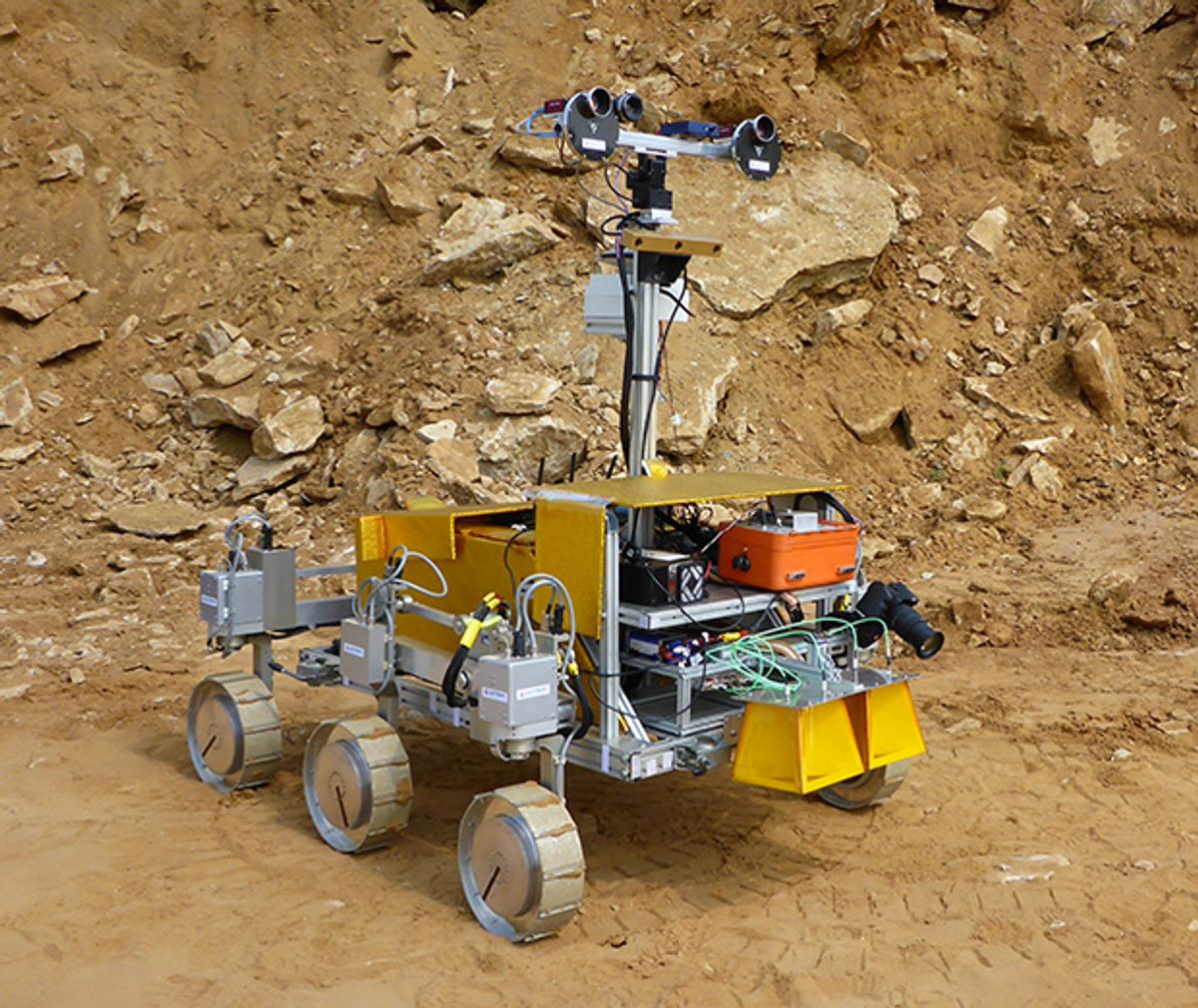Robots are pros at exploring space, because they're well-suited for all of the things that make space travel bad for humans: it's dull, it's dirty (in terms of radiation, anyway), and it's very, very dangerous. And, you know, the whole absence of air and water and food and warmth and all that stuff, too. NASA has had some incredible success sending robots to Mars in particular, and the European Space Agency (ESA) is preparing to send its own rover to the red planet in 2018. Before it gets there, however, it has to learn how to drive itself around, which is why it's first going to spend some time in Chile.
The ExoMars rover (a collaboration between ESA and Roscosmos, the Russian Federal Space Agency) is not as big as NASA's Curiosity rover, but there are still plenty of reasons why it's awesome. The most notable feature is that it's going to include a big freakin' drill on it that'll be able to extract samples from up to two meters beneath the Martian soil. It's also supposed to be able to travel about 100 meters per day, which is a very respectable distance. In order to make it that far, however, the rover can't keep on calling back home to ask for directions, and autonomy is going to be a big part of how it operates.
This month, an early prototype ExoMars rover adorably named Bridget has started field trials in the Atacama Desert in Chile. The Atacama is about as close to Mars as we can get on Earth, being dusty and dry and full of inconveniently placed rocks. The project is called SAFER (Sample Field Acquisition Experiment with a Rover), and at the moment, the focus is on autonomous navigation:
The aim is to build up experience in operating rovers on a planet, which requires a very different way of working from a satellite mission.For added pressure on the rover’s remote overseers – based at the Satellite Applications Catapult facility in Harwell, UK, next to ESA’s European Centre for Space Applications and Telecommunications – each day of the five-day test will be treated as equivalent to two Mars days, or ‘sols’.For each sol they will first downlink data then prepare a set of commands for the next sol that the rover will then carry out on its own.
While the above video just shows navigation, the remote team will also be selecting science targets for Bridget to explore. But, we're not allowed to see that in action just yet, because the trial is currently taking place, and if the remote scientists could read about how Bridget is doing in the Atacama on IEEE Spectrum, that would totally be cheating.
Remember that Bridget is just an early prototype of the ExoMars rover. Here's what the final version will look like:
The rover is scheduled to launch in 2018, with a 2019 arrival on Mars.
Evan Ackerman is a senior editor at IEEE Spectrum. Since 2007, he has written over 6,000 articles on robotics and technology. He has a degree in Martian geology and is excellent at playing bagpipes.




